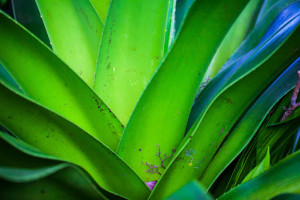For this ongoing series of the use of the senses in writing, I ran across this small paragraph in my forthcoming memoir, Evelio’s Garden. Just proof that, if you look at something long enough, it can turn into something else, something that can move a reader to see it in a fresh way.
The potted black begonia on the verandah is blooming. Its leaves feel like velvet, of a green so dark it is almost black, with red under-sides and fleshy, red-spotted stems. The blooms, at the ends of half-yard-long, almost translucent spears, emerge as fist-sized clusters of unspectacular rosy bivalve bracts that open to reveal minuscule yellow flowers. The whole plant, with a diameter of over 2 feet, seen from a distance, with its velvety black leaves and fleshy pink-tipped shoots sticking out all over, looks like something from another planet. I am finding that this sense of strangeness occurs with greater and greater frequency the more closely I observe a thing in Nature. The complexity, the variety, the sheer mechanics of how a thing is put together, the parts, the whole, the synchronicity with the other creatures around it, all astonish and amaze, as if I were a visitor exploring for the first time an alien sphere.
©2015, Sandra Shaw Homer

